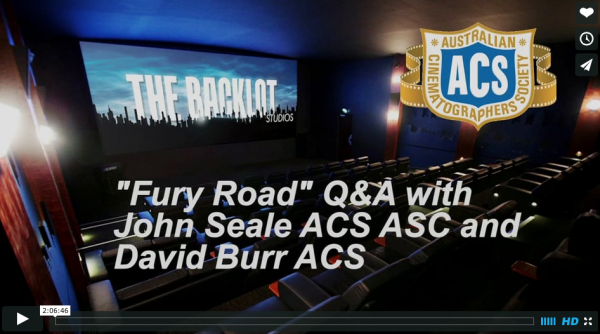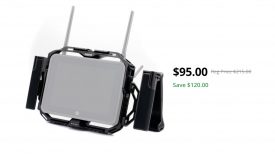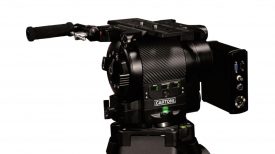By technical editor Matt Allard:

The Victorian Branch of the ACS (Australian Cinematography Society) recently had a detailed explanation of what went into filming Mad Max: Fury Road. The film’s cinematographer John Seale ACS ASC and 2nd Unit cinematographer David Burr ACS take you through a brilliant two-hour presentation.
Fury Road has been in the works since 1999 and has taken more than 15 years to complete. John Searle and David Burr run through the equipment used, shooting techniques and the complexities of working with director George Miller. George was after a very specific look and wanted the key element in shot to be centre framed at all times if possible.
Mad Max: Center Framed from Vashi Nedomansky on Vimeo.
Vashi Nedomansky has also done this great video of how the centre framing look was implemented. This from Vashi: “Film Editor Margaret Sixel was given over 480 hours of footage to create MAD MAX: FURY ROAD. The final edit ran 120 minutes and consisted of 2700 individual shots. That’s 2700 consecutive decisions that must flow smoothly and immerse the viewer. 2700 decisions that must guide and reveal the story in a clear and concise manner. One bad cut can ruin a moment, a scene or the whole film. One of the many reasons MAD MAX: FURY ROAD is so successful as an action film is the editing style. By using “Eye Trace” and “Crosshair Framing” techniques during the shooting, the editor could keep the important visual information vital in one spot…the Center of the Frame. Because almost every shot was center framed, comprehending the action requires no hunting of each new shot for the point of interest. The viewer doesn’t need 3 or 4 frames to figure out where to look. It’s like watching an old hand-drawn flip book whiz by. It’s always in the same spot!”
The film was originally supposed to be shot on 3D cameras and custom 3D cameras were built just for Fury Road. The complexities of filming in cramped vehicle cabins meant the film reverted back to shooting in 2D.
Interestingly enough around 10 Canon 5D Mark II cameras as well as some Blackmagic Pocket Cinema Cameras were used in conjunction with Arri Alexas and Alexa Ms.
We will have another article with the Movi operator who worked on Fury Road coming soon so stay tuned.





